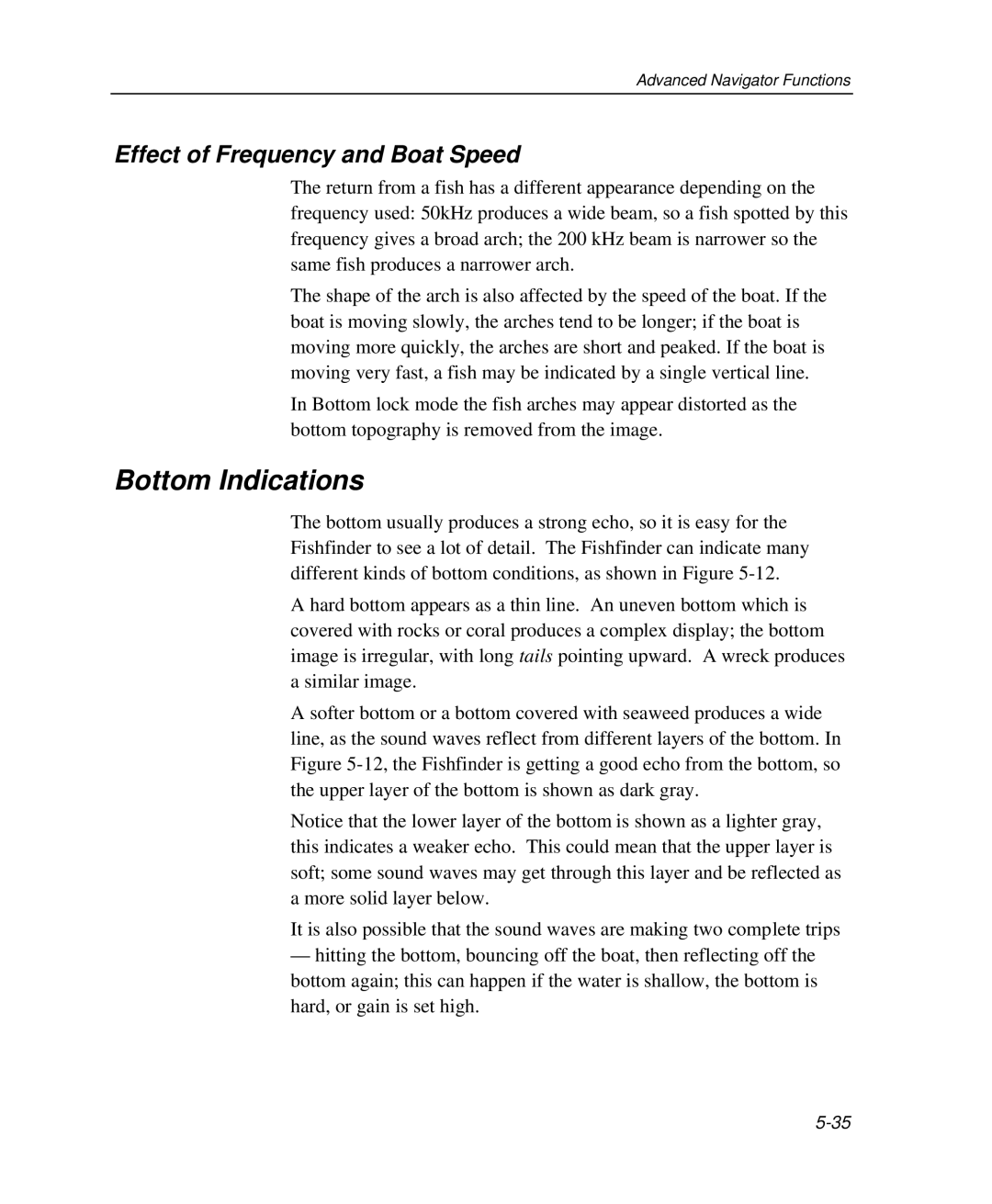Advanced Navigator Functions
Effect of Frequency and Boat Speed
The return from a fish has a different appearance depending on the frequency used: 50kHz produces a wide beam, so a fish spotted by this frequency gives a broad arch; the 200 kHz beam is narrower so the same fish produces a narrower arch.
The shape of the arch is also affected by the speed of the boat. If the boat is moving slowly, the arches tend to be longer; if the boat is moving more quickly, the arches are short and peaked. If the boat is moving very fast, a fish may be indicated by a single vertical line.
In Bottom lock mode the fish arches may appear distorted as the bottom topography is removed from the image.
Bottom Indications
The bottom usually produces a strong echo, so it is easy for the Fishfinder to see a lot of detail. The Fishfinder can indicate many different kinds of bottom conditions, as shown in Figure
A hard bottom appears as a thin line. An uneven bottom which is covered with rocks or coral produces a complex display; the bottom image is irregular, with long tails pointing upward. A wreck produces a similar image.
A softer bottom or a bottom covered with seaweed produces a wide line, as the sound waves reflect from different layers of the bottom. In Figure
Notice that the lower layer of the bottom is shown as a lighter gray, this indicates a weaker echo. This could mean that the upper layer is soft; some sound waves may get through this layer and be reflected as a more solid layer below.
It is also possible that the sound waves are making two complete trips
—hitting the bottom, bouncing off the boat, then reflecting off the bottom again; this can happen if the water is shallow, the bottom is hard, or gain is set high.
